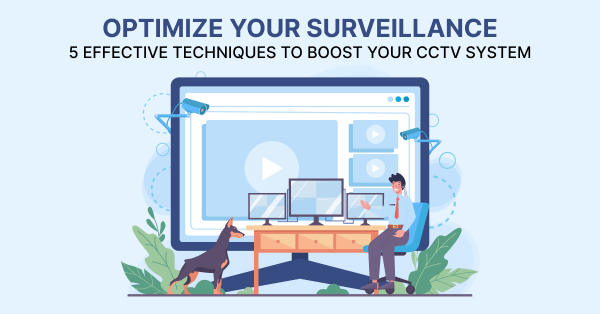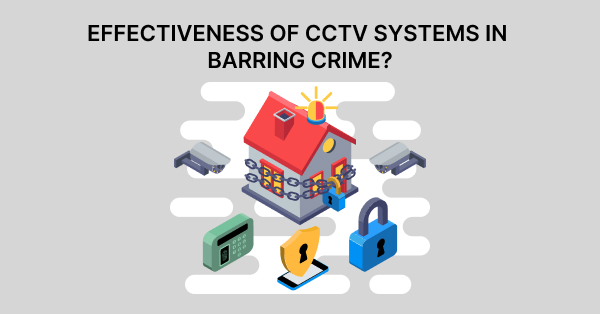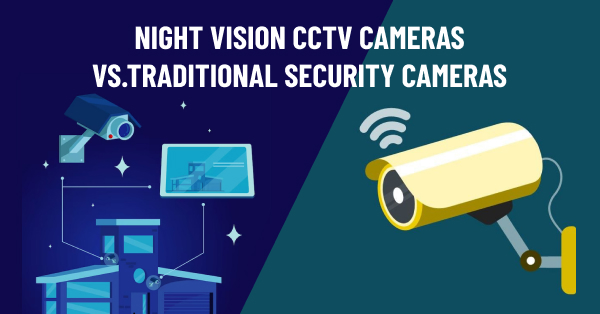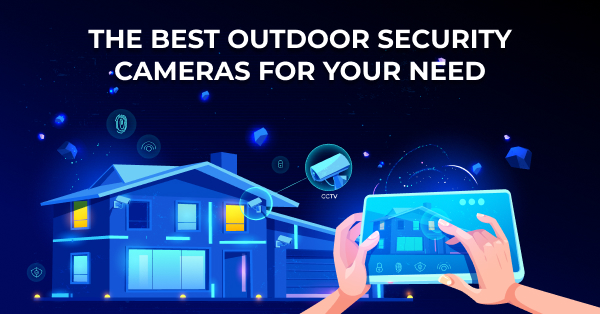
Effective Techniques to Boost CCTV Surveillance Systems | Secure by CCTV
Introduction
Optimization is crucial When it comes to ensuring security is effective and getting the most out of a CCTV surveillance system. Numerous factors, including camera placement, image quality, coverage, and integration with additional security measures, can be improved by optimizing the system. This optimisation makes better monitoring and threat detection possible, allowing for prompt and proactive action. A CCTV surveillance system that is properly tuned serves as a powerful deterrent, preventing criminal activity and protecting property, assets, and people.
Optimization also helps with investigation capabilities by offering crisp, detailed video, which makes it easier to find the guilty parties and collect proof. Furthermore, an optimized system makes data analysis, real-time alerts, and remote monitoring easier, enhancing overall security operations and facilitating quick decision-making. To put it briefly, keeping a proactive security posture, preventing crimes, enabling efficient investigations, and guaranteeing the safety and protection of people and property depend on an optimized CCTV surveillance system.
Importance of Optimizing CCTV Systems
Enhancing security, preventing crime, and providing peace of mind are just a few advantages of optimizing CCTV surveillance systems. An optimized system, first and foremost, ensures that critical areas are sufficiently monitored and potential blind spots are eliminated by offering enhanced surveillance coverage. The technology can efficiently monitor entry points, exits, and vulnerable areas by carefully positioning cameras and modifying their angles, discouraging criminal activity and lessening the possibility of unauthorized activity.
Optimizing also results in higher image resolution and quality, making capturing detailed and clear video possible. To accurately identify people, things, and events, this is essential. It also helps with investigations and can provide important evidence when needed. Frequent maintenance and monitoring investments enable the timely identification and resolution of potential technical issues, thereby ensuring the system’s dependability. The proactive strategy raises the surveillance system’s overall efficacy. An effective CCTV system lowers the possibility of criminal activity starting in the first place by promoting a sense of security and discouraging potential offenders.
Overall, optimising the CCTV surveillance system leads to increased security via thorough monitoring, crime prevention via deterrence and prompt action, and peace of mind by fostering a sense of safety and protection. To guarantee people’s safety, safeguard property, and uphold a secure environment, it is imperative to make this investment.
Camera Placement and Coverage
Every CCTV surveillance system’s effectiveness is largely dependent on the positioning and coverage of its cameras. By carefully placing cameras, blind spots can be avoided, and important areas are fully covered. The cameras’ location should consider the building’s layout, possible threats, and surveillance objectives.
Strategic camera placement is essential to achieve maximum coverage in a CCTV surveillance system. Critical areas can be efficiently monitored, and blind spots can be reduced by carefully placing cameras. Extensive property surveillance is ensured, valuable evidence is provided during a security incident, and potential criminals are discouraged by proper placement. It entails determining critical areas that need to be constantly monitored, considering each camera’s field of view, modifying the height and placement of the cameras, combining various camera types, and considering lighting conditions. Businesses and individuals can improve the efficacy and efficiency of their surveillance systems, thereby bolstering safety and security, by strategically placing cameras.
Lighting and Visibility
Lighting and visibility are essential components of a CCTV surveillance system’s efficacy. Clear and detailed footage is ensured by appropriate lighting, which is necessary for identifying people, actions, and incidents caught on camera. Enough lighting keeps important details from being lost by minimizing glare, shadows, and overexposure. It’s crucial to place the cameras considering both artificial and natural lighting sources. Infrared or thermal cameras can be used to improve visibility in low light or at night. To guarantee peak performance, camera lenses also need to be maintained and cleaned regularly. The CCTV surveillance system can provide trustworthy and actionable evidence by emphasizing lighting and visibility, which makes it possible to respond quickly to security incidents and effectively prevent crime.
Camera Maintenance and Upgrades
Upgrading and maintaining cameras is essential to a CCTV surveillance system’s durability and effectiveness. Maintaining optimal performance requires routine maintenance, including cleaning camera lenses, inspecting for physical damage, and ensuring the power supply is working properly.
Firmware updates and software upgrades should also be applied to improve system performance, fix security flaws, and gain access to new features. Upgrading cameras to newer models can offer more sophisticated analytics capabilities, better low-light performance, higher resolution, and better image quality as technology develops. Compatibility with the most recent standards and protocols is another benefit of upgrades, as it guarantees smooth interaction with other security systems. Businesses and individuals can increase the efficiency and dependability of their CCTV surveillance systems and guarantee ongoing security and peace of mind by investing in camera maintenance and upgrades.
Network and Video Management
The management of networks and videos are crucial elements of a successful CCTV surveillance system. A strong network infrastructure ensures smooth communication between cameras, storage devices, and monitoring stations. Real-time transmission of high-quality video footage makes it possible to respond quickly to security incidents. Firewalls, encryption, and user authentication are examples of network security measures that help prevent unwanted access and data breaches. Video management software (VMS) facilitates the easy retrieval, playback, and analysis of recorded footage by offering centralized control and organization of video feeds. In order to improve the system’s overall capabilities, VMS also provides advanced features like motion detection, event notification, and video analytics.
Data Storage and Backup
The security and preservation of video footage in a CCTV surveillance system greatly depend on data storage and backup. The system produces and captures a substantial amount of data; this data must be safely stored for later use as proof or reference. Network-attached storage is one example of a data storage solution that enables centralized and scalable storage, making it easier to manage and retrieve recorded footage efficiently. Regular backups are also necessary to guard against data loss from unanticipated events, storage malfunctions, and hardware failures. By implementing a comprehensive data storage and backup plan, organizations can guarantee the protection of vital video evidence, uphold data integrity, and guarantee the accessibility of footage when required. This not only makes CCTV surveillance more effective but it also makes it possible to conduct efficient investigations, analyses, and legal compliance.
Integration with Other Security Systems
Integrating CCTV surveillance systems with other security systems offers numerous advantages in enhancing overall security and efficiency. Firstly, integration allows centralized monitoring and control, enabling security personnel to access and manage multiple systems from a single interface. This simplifies processes, enhances situational awareness, and makes reacting quickly to possible threats easier.
Secondly, by connecting visual data with unique identification, access control systems and CCTV can offer a more complete picture of security. Correlating video footage with specific individuals, this integration reduces unauthorized entry, strengthens access management, and facilitates investigations.
Thirdly, integration with alarm systems facilitates automated response and real-time event detection, causing CCTV cameras to focus on particular trouble spots and assisting in prompt intervention. Furthermore, combining analytics software with CCTV improves features like object detection, facial recognition, and behavioral analysis. This makes surveillance more efficient and permits preventative security measures.
Conclusion
Finally, CCTV surveillance system optimisation is crucial to increase efficiency, strengthen security, and improve overall performance. Organizations can increase the capabilities of their CCTV systems by putting into practice five efficient strategies, which include strategic camera placement and placement, the use of high-quality cameras, integration of CCTV with other security systems, proper camera maintenance, and routine footage review. These methods improve situational awareness, facilitate prompt detection, support investigations, and offer a strong security posture overall. Furthermore, regular system assessments incorporating ongoing monitoring and improvement ensure optimal performance and address any gaps or challenges. By implementing these practical strategies, businesses can increase the efficiency of their CCTV surveillance systems and improve the security and safety of their personnel and property.






